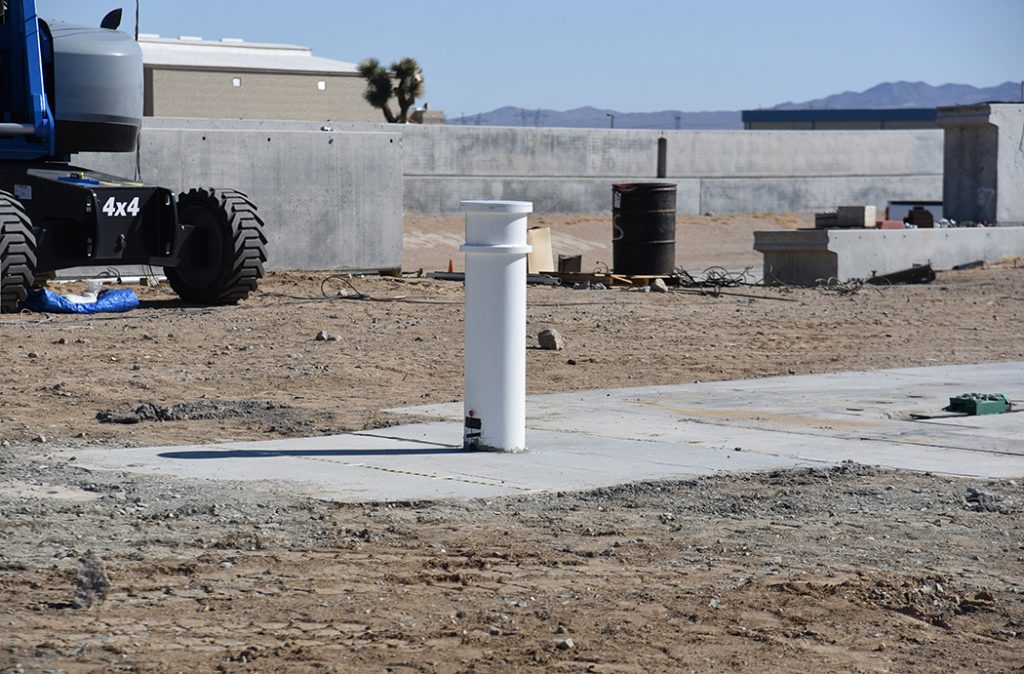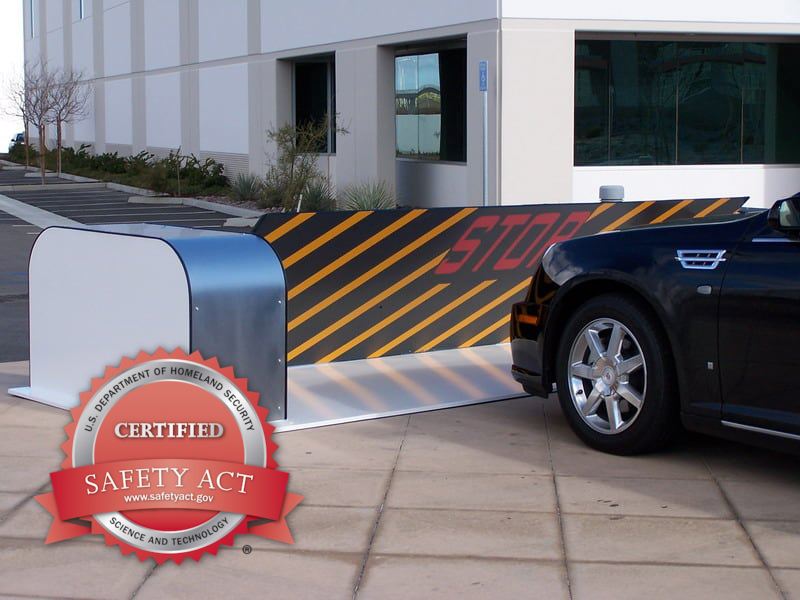Methods of Testing Different Bollard Types
Originally, a bollard was a post installed into the shore alongside a wharf to allow sailors to tie up boats and ships. The word is still used in this respect, but because ships of today tend to be much larger and made of heavier materials than the ships of the past, the bollards have to be much sturdier and stronger.
Testing bollards to make sure they can stand up to the stress of a vehicle impact is important. Otherwise, the device wouldn’t be useful as a barrier in the event of an accidental or purposeful collision. Explore common bollard types, their uses and the methods used to test the strength of these important barrier devices.

Bollard Types and Their Uses
Because bollards are used for so many different applications, there are many types to consider. Here are just a few examples of types of bollards:
- High security bollards
- Portable bollards
- Shallow foundation bollards
- Retractable bollards
These bollards all offer distinct advantages and applications. High-security bollards are designed to handle the maximum impact without compromising the barrier. Portable bollards can be quickly set up to temporarily prevent vehicle access to a specific area. Shallow foundation bollards are useful when sites are limited to shallow excavations. Finally, retractable bollards allow sites to monitor areas to both offer and restrict access.
Delta Scientific bollards resemble those used in seafaring for purposes of docking, which is how they got their name. However, they serve a very different purpose, so they need to pass different testing methods.
Our bollards are installed inland, typically around urban buildings and pathways, to prevent motor vehicles from entering designated pedestrian zones, whether accidentally or on purpose. These bollards have to be just as strong and sturdy as maritime bollards, and for the same reason: To prevent a vehicle from going where it is not supposed to go.
There are different techniques involved in testing each type of bollard. Review the methods of testing bollard types to ensure they provide safe, effective barriers.
U.S. Navy Designs New Bollard Test
In the past, maritime bollards were tested using tugboats that were connected to the bollards by ropes and then pulled on them. Though the best technique available at the time, it left a lot to be desired. It did not recreate the uplift that bollards might experience due to the angle of vertical mooring lines. Besides that, it was dangerous.
The U.S. Navy—which maintains thousands of bollards worldwide, not just in American ports—recently patented a new device with the ability to test bollards in situ, a method which is not only safer but a more authentic assessment of their strength. A winch applies force to the bollard by pulling on a cable attached to it while a rectangular frame of steel tubing holds the device in place. This method is preferred for determining whether these bollard types are performing to their full capacity.
Delta Scientific Uses Crash-Testing To Determine Bollards’ Strength
While our bollards may bear some resemblance to those used by the U.S. Navy, they serve a different purpose. Our bollards are intended to stop a vehicle traveling at top speeds from crashing into a building or pedestrian area.
This can cause extensive property damage, serious injuries, and even death. Therefore, we perform crash tests to determine how effective these bollard types are at protecting buildings and pedestrians from speeding vehicles.
We give Delta Scientific products K-ratings according to the older Department of Defense scale as well as M-ratings based on the scale developed by the American Society for Testing and Materials, a civilian organization. The criteria are the same for each. The test involves slamming the bollards with a fully-loaded, medium-duty truck weighing up to 15,000 pounds.
The speed at which the bollards are effective at stopping this vehicle determines its M-rating and K-rating. The highest M-rating is an M50, meaning the bollards are effective at stopping a medium-duty truck going 50 miles an hour. It is equivalent to a K12 rating on the Department of Defense scale.

To ensure leading security and protection from different bollard types, Delta Scientific became certified under the SAFETY Act by the Department of Homeland Security. This ensures that bollards meet the requirements for both active and passive barriers.
Receiving this certification not only offers customers peace of mind but also limits the seller’s insurance liability in the event of legal protection incidents, such as acts of terrorism.
What Is the Most Effective Type of Bollard?
Understanding the purpose of bollard types helps determine the most effective for specific situations. While there isn’t a single type of bollard that is most effective for every situation, some are better for different purposes. Delta Scientific offers several K12- and M50-rated bollards, which provide the highest level of protection.
For example, Delta Scientific’s DSC720 bollard has the highest rating for crash testing. This durable barrier can withstand a vehicle weighing 15,000 pounds colliding with it at 50 miles per hour.
Retractable bollards, like the DSC800, can be a popular option for controlling access to specific areas. A line of retractable bollards prevents vehicles from accessing a road or site while they are fully extended, but can be retracted to allow access for service vehicles or site personnel.
Law enforcement officers sometimes need to quickly secure an area from vehicle traffic. The TB100 portable bollard may not offer the same high-speed crash rating of a secured barrier, but it can be easily moved and set up for special events or temporary situations. Once the situation is resolved, the bollards can be quickly and efficiently removed from the scene.
Find Reliable Bollard Types From Delta Scientific
From temporary barriers to long-term security around a building, bollards offer necessary security in diverse environments. Not only is it important to select the right bollard type, but it’s equally important to know that they have passed strict testing methods. Contact us at Delta Scientific to learn more about our K12- and M50-rated bollard types to find the right option for the security you need.
Sources:
https://www.armscontrol.org/factsheets/NuclearSecuritySummit
Share This Story, Choose Your Platform!
